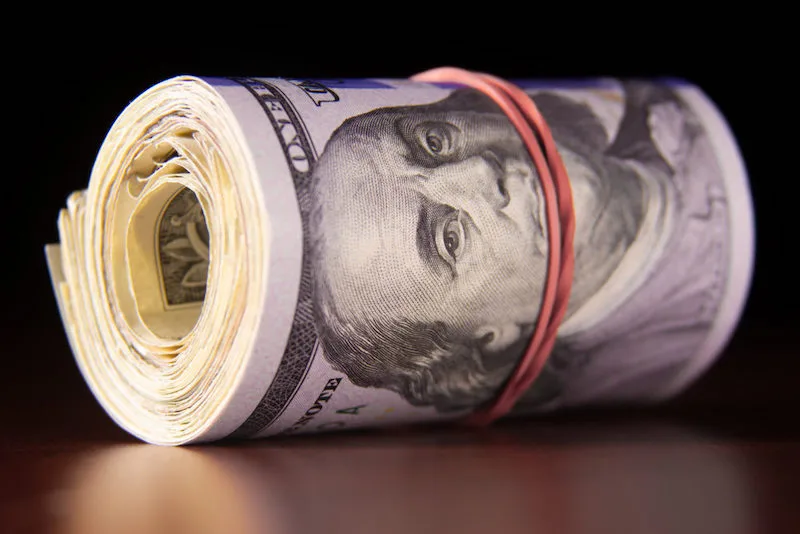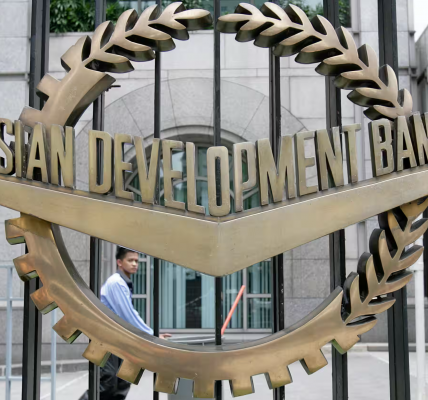What has caused the fall of the dollar, and is there gloom to come for the US economy?
Does it sound crazy for there to be 9 or 10 interest rate cuts in the next 12 months? Perhaps yes, but this is what could be expected in the near future for the US economy.
On Tuesday (20th August), the dollar hit a new low in value, amid the US market’s expectation for interest rate cuts to be made soon by the Federal Reserve (FED). The dollar has dropped to its lowest level since January this year, declining by a considerable 2.2% or 102.20 on the DYX (U.S. Dollar Index).
All eyes are on the Federal Reserve Jackson Hole Symposium on Friday, an annual event hosted by the Federal Reserve Bank of Kansas City since 1978 (Pal. P et al, 2021), where key issues are discussed between central banks and policymakers to determine a forward pathway for the US economy. It is anticipated that Jerome Powell, the FED chairman, will be delivering a speech regarding the future economic outlook, with potential hints at future rate cuts – at least this is what the markets are hoping for.
Come Saturday and with no clues on a potential a drop in interest rates, we could see a repeat of the economic turmoil which commenced just a couple of weeks ago. Then again, perhaps this blow will be cushioned by last week’s strong retail growth data, which leapt 1% in July, wiping out economic forecasts of a 0.3% increase (Meyer, G. et al, 2024), signalling away from an approaching recession for the US.
Why are traders expecting interest rate cuts?
Last month, the US Bureau of Labour Statistics announced just 114,000 jobs were added to the labour market, 34.8% less than expectations. As a result, this signalled a rise in unemployment, which caused a subsequent fall in market performance, with equities taking a substantial hit in a global sell-off, ignited by feelings of economic slowdown for the US. Talks of a recession were quickly becoming louder.
However markets have slowly recovered, and traders expect interest rates to be cut because in economic theory, lower interest rates encourage increased borrowing and investment, stimulating business growth where firms can expand and employ more workers. In addition to this, and what helps explain today’s dollar depreciation, a reduction in interest rates would make it relatively less attractive to save in the US, causing increased hot money outflows (movement of savings into high yield savings accounts abroad where interest rates are higher).
Chaos in the Japanese market also fuelled the dollar devaluation, thanks to ‘carry trades’ unravelling.
The Japanese ‘carry trades’ were an investment strategy undertaken by many investors globally, particularly in the US, where the Japanese Yen became an attractive space for carry trades. This is because Japan had super-low interest rates (almost negative), which meant investors would borrow the yen for a cheap price, and use it to purchase currencies with high yields and invest in bonds for example, facilitating substantial gains when the investor eventually converted the dollars back into yen and repaid the loan (Ranganathan, V. 2024).
However, in the beginning of August, the Bank of Japan (BOJ) hiked up their interest rates from 0.1% to 0.25% (Da Silva, J. 2024)) amid fears of a US recession. This meant those investors who borrowed yen to trade in dollars, rushed to cover their short positions as the yen quickly rose, because they would in theory have to earn more dollars to pay back their yen-denominated loan. (Rosevear, J. 2024). This caused the huge stock sell-off because of the magnitude of carry trades taking place across the globe.
Could there be more cuts than expected in the next year?
With all of this bubbling around the surface, a huge 9 to 10 interest rate cuts could occur across the next 12-18 months, with the reason being because of the neutral rate. The neutral rate is the theoretical federal funds rate (Kaplan, S. R. 2018) which roughly matches the rate of inflation, and is ‘neutral’ because it neither stimulates or restricts the economy. The federal funds rate currently sits at 5.3% (St. Louis FED, 2024) as of July 2024, whilst inflation is at 3%, indicating they’re 2.3% restrictive. So assuming markets are correct and rate cuts will be quarter-point (0.25%), it would take 9-10 cuts to reach the ‘neutral’ point. This large spread appears to be because the FED are again behind the curve and late to interest rate cuts, only after the economic highs and start once it starts to deteriorate. The FED are like that one friend who is always late to a group social.
Conclusion
The US dollar has suffered heavily the past month due to various factors such as the carry trades, rising unemployment, slowing economic activity etc. and it is on a shaky footing at the moment.
References:
- Da Silva, J. (2024, July 31). Japan hikes interest rates for second time since 2007. BBC News. The Bank of Japan raises interest rates for second time this year – BBC News
- Kaplan, S.R. (2018, October 24). The Neutral Rate of Interest. Federal Reserve Bank of Dallas. The Neutral Rate of Interest – Dallasfed.org
- Meyer, G. Clarfelt, H. Smith, S. (2024, August 15). US stocks rally as strong retail sales raise hopes of ‘soft landing’. Financial Times. US stocks rally as strong retail sales raise hopes of ‘soft landing’
- Pal, P., & Dutta, A. (2021). How the Jackson Hole Symposium impacts the US Federal Reserve. magzzine Font Updated.cdr (iimcal.ac.in)
- Ranganathan, V. (2024, August 7). What is the yen carry trade? Reuters. Explainer: What is the yen carry trade? | Reuters
- Rosevear, J. (2024, August 5). What is a carry trade, and how did a small rate hike in Japan just trigger a global sell-off? The Motley Fool. What Is a Carry Trade, and How Did a Small Rate Hike in Japan Just Trigger a Global Sell-Off? | The Motley Fool
- St. Louis FED. (2024, July) Federal Funds Effective Rate. Federal Funds Effective Rate (FEDFUNDS) | FRED | St. Louis Fed (stlouisfed.org)






